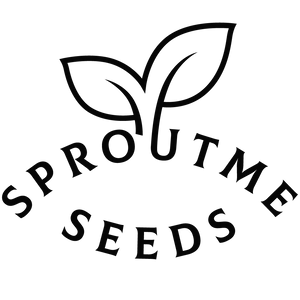Lovage
Lovage (Levisticum officinale) is a robust perennial herb that is valued for its celery-like flavor and versatility in the kitchen. Known for its tall, leafy stalks, lovage can be used in soups, stews, salads, and even as a flavoring for teas. This guide will take you through the steps to successfully grow lovage in your garden or containers.
1. Preparing for Growing
Selecting a Planting Location:
Choose a location in your garden that receives full sun to partial shade. Lovage thrives in areas with at least 6 hours of sunlight daily but can tolerate some shade, especially in hotter climates.
Soil Preparation:
Lovage prefers well-draining soil rich in organic matter. Incorporate compost or aged manure into the soil to enhance fertility and drainage. Aim for a soil pH of 6.5-7.5.
Purchasing or Preparing Containers/Pots:
If you plan to grow lovage in containers, choose large pots with good drainage. Lovage has a deep root system, so containers should be at least 12 inches deep.
2. Starting from Seeds Indoors
Seed Preparation:
Lovage seeds do not require special treatment before planting. However, soaking them in water for 24 hours before sowing can help improve germination rates.
Choosing Suitable Pots/Containers:
Use seedling trays or small pots filled with a well-draining seed-starting mix. Ensure the containers have adequate drainage.
Sowing and Caring for Seeds Indoors:
Sow lovage seeds indoors 6-8 weeks before the last frost date. Sow seeds about ¼ inch deep and keep the soil moist but not waterlogged. Maintain a temperature of 60-70°F (15-21°C) for optimal germination, which usually takes 10-20 days.
Transplanting to Larger Containers if Necessary:
Once seedlings have developed several sets of true leaves, they can be transplanted into larger pots or directly into the garden.
3. Starting from Seeds Outdoors
Soil Preparation:
Prepare the planting area by removing weeds and loosening the soil to a depth of 12 inches. Incorporate organic matter to improve soil structure and fertility.
Selecting Appropriate Timing and Method for Outdoor Sowing:
Directly sow lovage seeds outdoors after the danger of frost has passed and the soil temperature has warmed to at least 60°F (15°C).
Caring for Seeds Outdoors:
Sow seeds ¼ inch deep and keep the soil consistently moist until seeds germinate. Germination can take 10-20 days. Thin seedlings to about 18-24 inches apart to allow room for growth.
4. Growing in Containers/Pots
Selecting Suitable Plants for Containers:
Lovage is well-suited for container gardening, especially for patios or balconies. Ensure the container is large and deep enough to accommodate the plant's root system.
Container and Soil Preparation:
Use containers with drainage holes and fill them with a well-draining potting mix enriched with compost. Ensure the container is at least 12 inches deep.
Sowing or Transplanting Plants into Containers:
Sow seeds directly into containers or transplant seedlings. Space plants about 18-24 inches apart if growing multiple plants in a larger container.
Caring for Container Plants:
Place containers in a sunny location. Water regularly to keep the soil evenly moist but not waterlogged. Fertilize with a balanced liquid fertilizer every 4-6 weeks during the growing season.
5. Transplanting to Garden
Soil and Planting Site Preparation:
Prepare the garden bed by incorporating compost and ensuring good drainage. Space lovage seedlings 18-24 inches apart in rows spaced 24-36 inches apart.
Correct Timing and Method for Transplanting:
Transplant lovage seedlings outdoors after the danger of frost has passed and the soil has warmed. Water transplants thoroughly after planting to reduce transplant shock.
Post-Transplant Care:
Mulch around plants to conserve moisture and suppress weeds. Lovage can grow quite tall, so providing support with stakes or a trellis may be necessary.
6. Plant Care
Watering:
Keep the soil consistently moist, especially during dry periods. Water at the base of plants to avoid wetting foliage, which can lead to disease.
Fertilizing:
Apply a balanced fertilizer or compost tea every 4-6 weeks during the growing season to provide essential nutrients.
Weeding:
Keep the garden bed or container free from weeds to reduce competition for water and nutrients.
Pest and Disease Management:
Monitor plants regularly for signs of pests or diseases. Lovage is relatively pest-resistant but can be affected by aphids and leaf miners. Use organic insecticidal soap or neem oil to manage pests.
7. Harvesting
Determining When Plants Are Ready for Harvest:
Lovage leaves can be harvested once the plant is well-established, usually in its second year. Stalks and seeds can also be harvested as needed.
Harvesting and Storage Guidelines:
Harvest leaves as needed by cutting them from the base. Stalks can be cut similarly, and seeds should be collected when they turn brown and dry. Store leaves and stalks in the refrigerator for up to a week, or dry them for longer storage. Seeds should be stored in an airtight container.
8. When to Start from Seeds by USDA Plant Hardiness Zones
Timing for Starting Seeds:
Start lovage seeds indoors 6-8 weeks before the last frost date. Sow seeds directly outdoors after the danger of frost has passed and soil temperature is at least 60°F (15°C).
9. Fast Facts
- Planting Depth: Plant seeds ¼ inch deep.
- Seed Spacing: Sow seeds ½ inch apart and thin to 18-24 inches apart.
- Plant Spacing: Space plants 18-24 inches apart in rows spaced 24-36 inches apart.
- Number of Seeds per Pot/Container: Plant one seed per pot/container.
- Water Preferences: Keep soil consistently moist; avoid overwatering.
- Sun Preferences: Requires full sun to partial shade.
- Soil Type: Well-draining, rich in organic matter; pH 6.5-7.5.
- Companion Planting: Plant with carrots, tomatoes, or celery to enhance growth and deter pests.
- Temperature Preference: Thrives in cooler temperatures; prefers daytime temperatures between 60-70°F (15-21°C).
- Days to Germination: 10-20 days.
- Days to Harvest: Leaves can be harvested in the second year, with stalks and seeds following as needed.







